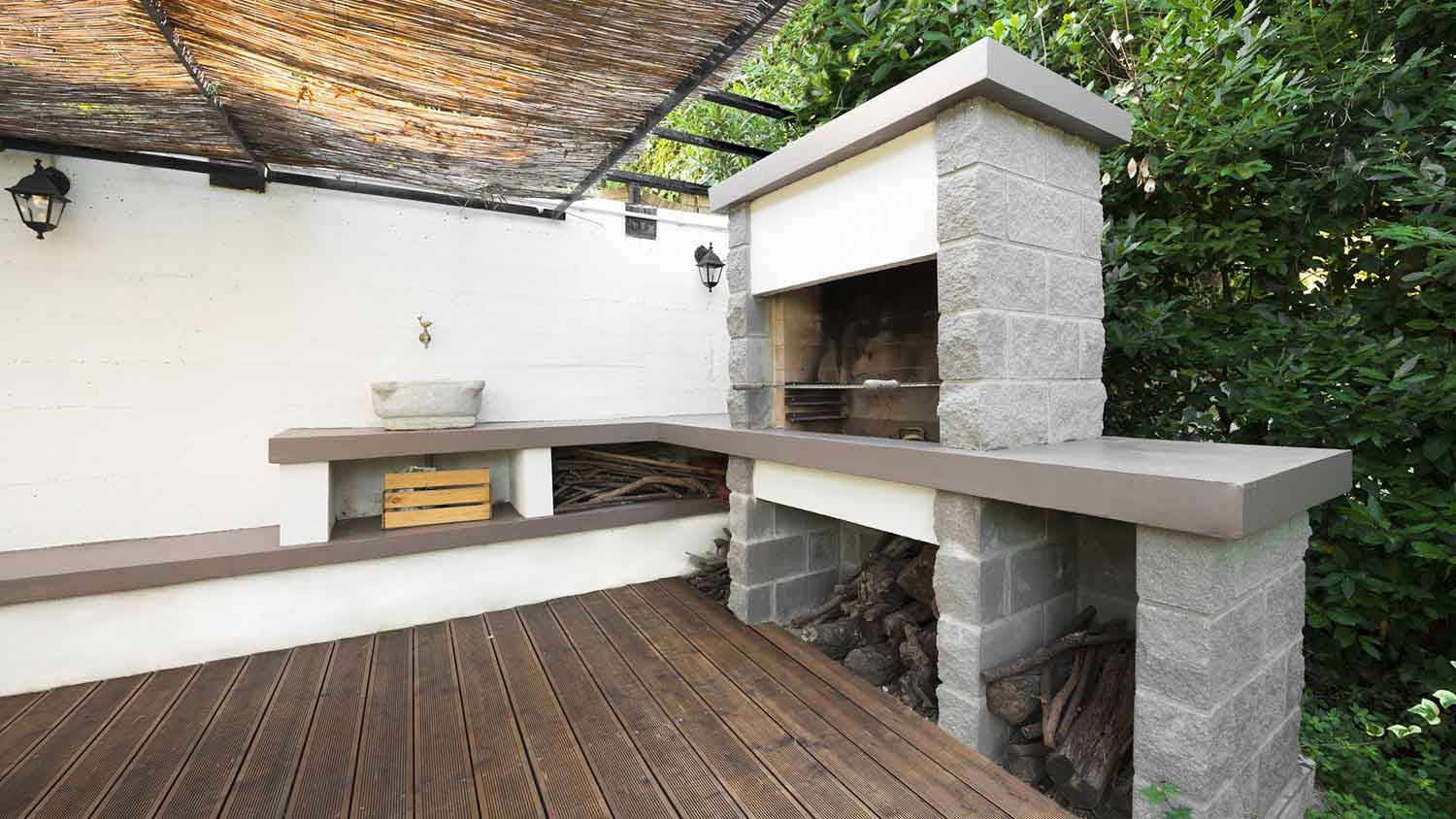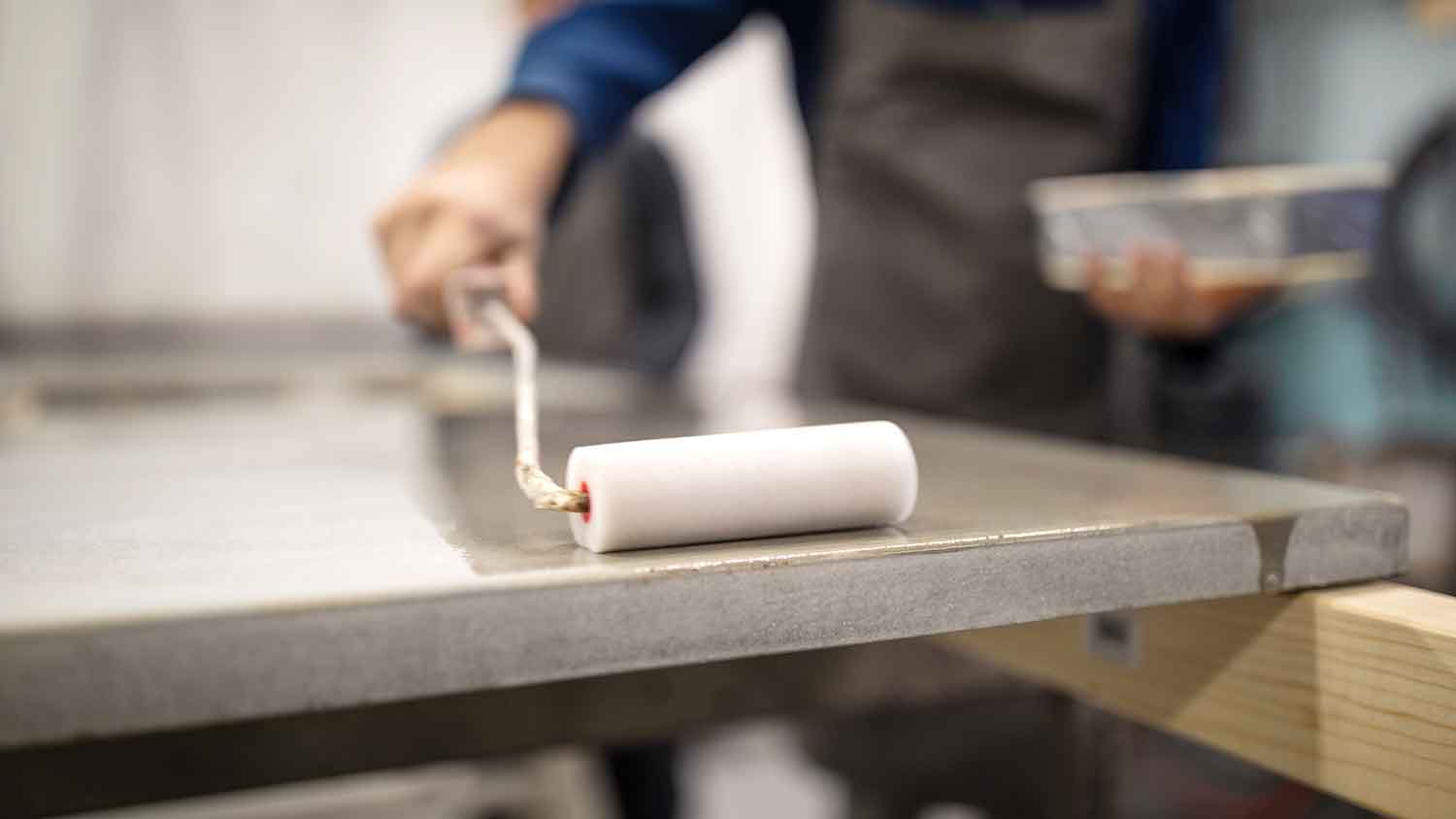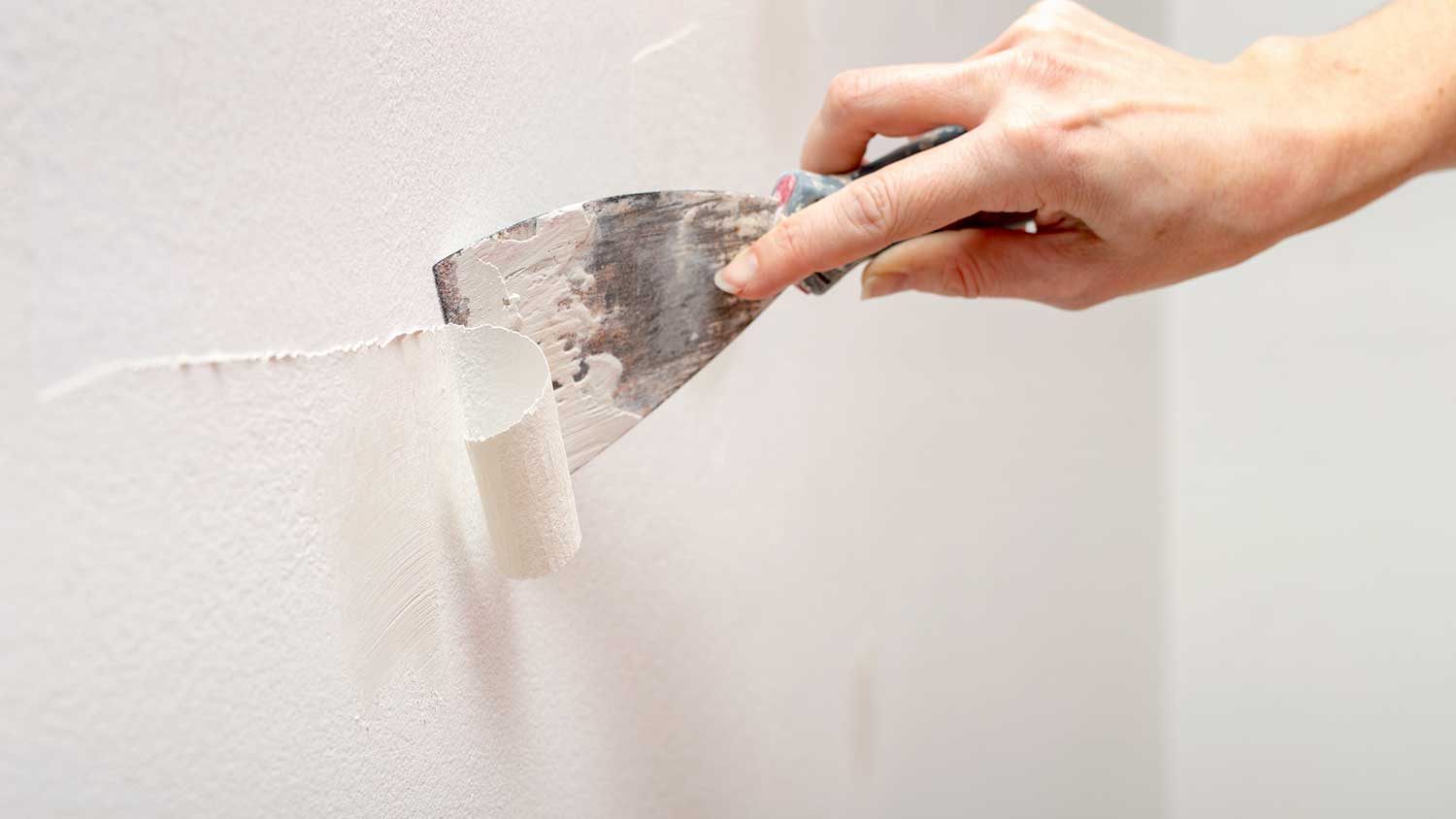Painting Concrete Countertops in 7 Easy Steps
All it takes is a little dye or stain to spruce up your concrete countertops


If you are looking for a way to spruce up your kitchen without spending big bucks on new countertops, consider painting your concrete countertops. It is a project for anyone who is unafraid to roll up their sleeves and get a little dirty, and it can transform your kitchen in a few simple steps.
What Are Concrete Countertops?
Concrete countertops are becoming more common and popular, thanks to their durability, longevity, and opportunities for customization. They are heavier than any other countertop option in your kitchen and can have custom shells or stones poured into the concrete for a unique look. With the right maintenance, including proper sealing, these industrial-looking countertops can be water and stain resistant. It is important to familiarize yourself with concrete countertops' pros and cons before committing to them, and to understand that concrete countertops cost around the same as granite or quartz, but most homeowners find them to be well worth the investment.
When to Consider Painting Concrete Countertops
You might wonder, can you paint concrete countertops? Yes, you can! Concrete countertops, while durable, may look boring in neutral gray. But adding a pop of color will transform the look of your kitchen while keeping costs down. Don’t worry if you did not add color to your concrete countertops when you first installed them; you can paint concrete countertops after the fact, creating the look you desire.
How to Paint Concrete Countertops

If you are ready to jump into painting your concrete countertops, here are the steps to take.
1. Choose the Type of Paint
Before choosing your concrete countertop paint, you must determine the look you desire. You can choose from several concrete countertop ideas to get your desired look.
Integral Color
If you are looking for a solid color and have not yet installed your concrete countertops, opting for integral color makes the job easy. Have your installer add a liquid or powdered pigment to the wet concrete, and you will have solid colored concrete countertops that do not require any painting.
Integral color is nice because it retains the concrete's natural appearance and texture. If you use integral color but end up disliking it, you can use spray stain or dye to change its color down the road.
Paint
Traditional paint is not as common as other methods to paint concrete, but it is possible. To paint concrete countertops, you would use concrete paint, which most people use for outdoor painting. Before starting, sand the countertops, apply a concrete primer, and paint one coat at a time using a roller brush. The final step—no matter the type of paint chosen—is to seal the paint with a food-grade sealant.
Stains
A concrete stain is a semi-transparent paint that allows some of the concrete's natural color to shine through the paint. It provides a great subtle look while adding some color to the room.
There are water-based and solvent or acid stain options. Water-based stains use large color particles so they do not penetrate deep into the concrete. This creates an opaque look versus a deep, solid color. It is easy to create variegated patterns with water-based stains.
Acid stain does not penetrate the concrete, but instead reacts by etching its surface. This mimics the appearance of natural stone with its marbled look. Since acid stain reacts with concrete, you have less control over the color. It tends to use more natural colors.
You have many options for application, including sponging, brushing, spraying, or rolling, depending on the final look you desire. If you use any method besides spraying, be sure to use light strokes. You can always add more variation if you find it is not enough.
Spray stain is one of the messier options for painting concrete countertops, but you can customize the look by adding more or less stain. When applying spray stain, work in layers, waiting between each layer to see how it looks when dry. It is much easier to add color than to take it away.
Dye
Dyes are the next best thing to integral color if you are looking for more penetration. Dyes can work through already polished surfaces, but they are more permanent than other options, so there are no “do-overs” with dye.
You can apply dyes alone, mix them with other colors, or layer them for a marbled look. Like stains, they are available as water- or acid-based. Water-based dyes are more translucent, whereas acid-based dyes penetrate deeper and react with the concrete, giving you less control over the final outcome.
Like spray stain, you can apply dye using your desired method, whether with a brush, sponge, or roller. The key is to work in small sections and let each layer dry to determine your next steps.
Epoxy Paint
Epoxy paint can make your concrete countertops look like natural stone, with a marbled and high gloss finish. You have a few options with epoxy paint, including using one solid color, mixing two colors for swirling, or sporadically adding splashes of color to create a customized look. You can add flecks and glitter for texture.
2. Sand the Countertops
Before applying paint or even cleaning the countertops, you should first sand them. You can use fine-grit sandpaper for a smooth surface and higher-grit sandpaper for a textured surface, but make sure they have a diamond grit. The point of sanding the countertops is to remove any dirt and small imperfections. Be sure to sand lightly. If you sand too hard, you could remove part of the surface. It is usually best to sand by hand rather than using a sander to avoid taking off too much.
3. Clean the Countertops
Before applying paint, it is important to clean the countertops. Mix half a cup of vinegar with a gallon of water, wiping the entire surface with the mixture. Next, wipe down the countertop with clear water and a soft cloth.
4. Prepare the Area

It is important to prepare the area when painting concrete countertops. Concrete paint can get messy, so properly prepare the area by laying drop cloths on floors and major appliances. Also, use painter's tape on the cabinets, walls, and backsplash to avoid paint from going anywhere other than the countertops.
5. Apply a Concrete Primer
After cleaning the countertops, add a concrete primer. This helps the paint adhere to the concrete. Make sure the concrete dries completely before applying paint.
6. Paint the Concrete Countertops
Using the chosen paint type, apply the paint. If you are using spray paint, work in small areas and be sure to protect it from overspray. If you are using a brush, paint in light strokes to ensure you do not create more texture than anticipated.
7. Seal the Concrete

The final step, after the paint dries completely, is to seal it. Since most concrete paint is not food-grade, applying a sealant like tung oil is best to ensure the countertops are safe for food preparation.
When properly sealed, painted or stained concrete countertops can last a long time, making repainting unnecessary. If you have issues with your painted concrete countertops, it is inadvisable to repaint them, since most options are transparent and will show at least some of the existing paint, resulting in a less than optimal color.
If you must repaint concrete countertops, consider hiring a professional to sand them. This allows you to start fresh with a new layer of unstained concrete, since stain penetrates less than one-sixteenth of the concrete’s depth.
Tips for Refinishing Concrete Countertops
When painting concrete countertops, a lot can go wrong if you are not careful. Here are some tips to ensure success.
Sand lightly: You can always sand more if you are unhappy with the surface after sanding, but sanding too much can ruin the surface and leave an unpleasant texture.
Use water when sanding: If you want to eliminate dust while sanding, keep a spray bottle handy and lightly mist the countertop with water.
Paint in thin coats: You can always apply more paint, but it is difficult to remove an excess of paint. Work in thin layers, painting two to three layers, if necessary.
DIY vs. Hiring a Pro
Hiring a professional to paint your concrete countertops may not be wise if you are looking for kitchen countertop ideas on a budget. But realize that it is a messy and time-consuming job. Hiring a professional to paint your concrete countertops can cost $20 to $50 an hour. While it will cost more to hire a pro, you are paying for their experience. You do not have to deal with the mess or worry about making a mistake, especially since concrete countertops are unforgiving. If you do make a mistake, you may be stuck with it or be forced to repaint the countertops, costing yourself more money. Finding a painter near you may be well worth it.
Frequently Asked Questions
Yes, you can change the color of concrete countertops multiple times. If you use paint rather than a stain, you can go from dark to light, but if you are only using a stain, you can go from light to dark.
Concrete countertops are made food-grade through their sealant and the continued use of a food-grade cleaner. For that reason, it is important not to use acidic cleaners or bleach. Read the ingredients on any cleaner and avoid products with vinegar, acid, or anything else that could eat away at the concrete's sealant.
Gray is always a safe bet when painting concrete countertops, since concrete is a variation of gray. You may also choose black or white, but those are much starker colors that only do well in certain kitchens.
Concrete stain is usually better than dye for longevity because it is more durable and shows less wear and tear. While stain is not as saturated as dye, it gives you more control over the final look of the concrete countertops.














